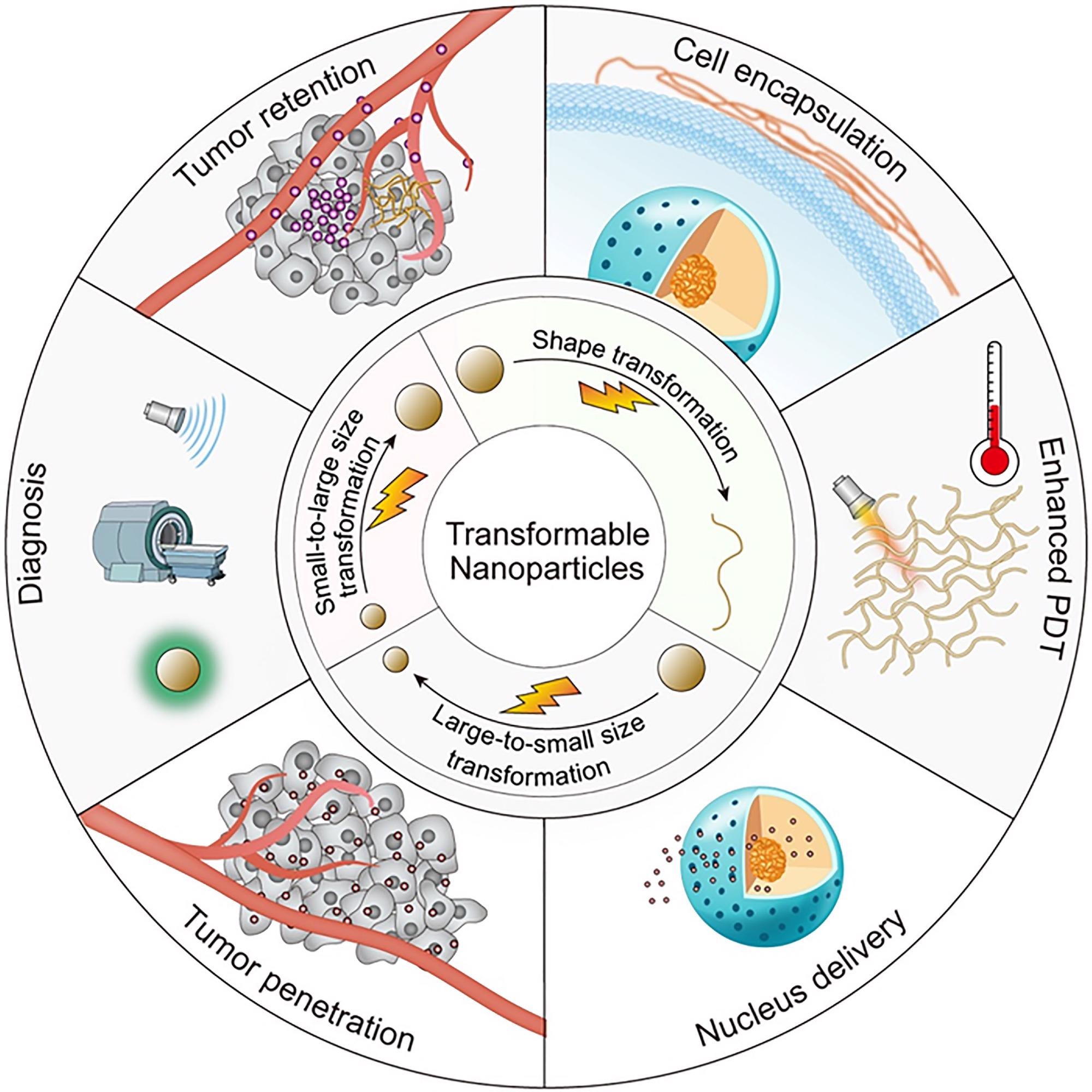For over 30 years, biomedical nanomaterials have been effectively engineered for the benefit of theranostics — a compound term denoting tumor diagnosis and treatment.
 Smart transformable nanoparticles could undergo size or shape transition as the requirement of different conditions, showing great potential in future tumor theranostics. (Image Credit: Jianxun Ding).
Smart transformable nanoparticles could undergo size or shape transition as the requirement of different conditions, showing great potential in future tumor theranostics. (Image Credit: Jianxun Ding).
To target the treatment for a tumor, nanoparticles have to be able to reach the tumor area and its specific microenvironment.
The latest studies reveal how the physical features of nanoparticles, particularly their shape and size, radically impact their biological behaviors. Control over these material features is essential to guarantee the treatment is discharged at the tumor, after the particles have traveled via many other healthy physiological microenvironments.
In Applied Physics Reviews, by AIP Publishing, scientists from China and the United States analyze how biology stimulates morphological changes in some types of nanoparticles. These types of particles are known as smart transformable nanoparticles because they can modify their shape and size upon stimulation from their immediate environment.
These smart transformable nanoparticles are mainly favorable for tumor theranostics because their physical features will adjust to physiology. These adjustments increase particle circulation, biodistribution, tumor retention, tumor penetration and subcellular distribution for targeted therapy.
Smart transformable nanoparticles can alter their morphologies under different physiological conditions as the therapeutic demands. In our study, we reveal the structural designs for these smart systems as well as the in-depth mechanisms of the transformations.
Jianxun Ding, Study Co-Author and Researcher
The scientists showcase the designs of transformable nanoparticles as a parameter for their construction and deliberate on the biomedical applications in the domain of theranostics. Ding and his colleagues demonstrate their insight via unique classifications for nanoparticle transformation design and the processes contributing to the modification.
For instance, the scientists split the design transformation into two general categories: size and shape. For size-transformable nanoparticles, the modifications are further split into large-to-small and small-to-large transformations. The study reveals comprehensive and rational designs of transformable nanoparticles based on their structures.
As for the processes influencing nanoparticle transformation, "we believed the structure and stimuli both made a great contribution," said Ding. "For example, different pH values decided the accurate site for the transformation, which correlate to varying physiological, extracellular, and endo/lysosomal conditions."
Nanoparticles with stable physical morphologies have been extensively examined and applied in tumor theranostics in the past, while the latest studies on nanoparticle transformation occurrences have concentrated mainly on the reaction to stimuli. Thus far, however, there has not been a thorough discussion on the composition and applications of morphology-transformable nanoparticles.
Our review covers the structure design, mechanism for transformation, and biomedical application of smart transformable nanoparticles, and includes perspectives on their limitations as well. We believe this review will shed light on this important field.
Jianxun Ding, Study Co-Author and Researcher
Journal Reference:
Chen, J., et al. (2021) Smart transformable nanoparticles for enhanced tumor theranostics. Applied Physics Reviews. doi.org/10.1063/5.0061530.